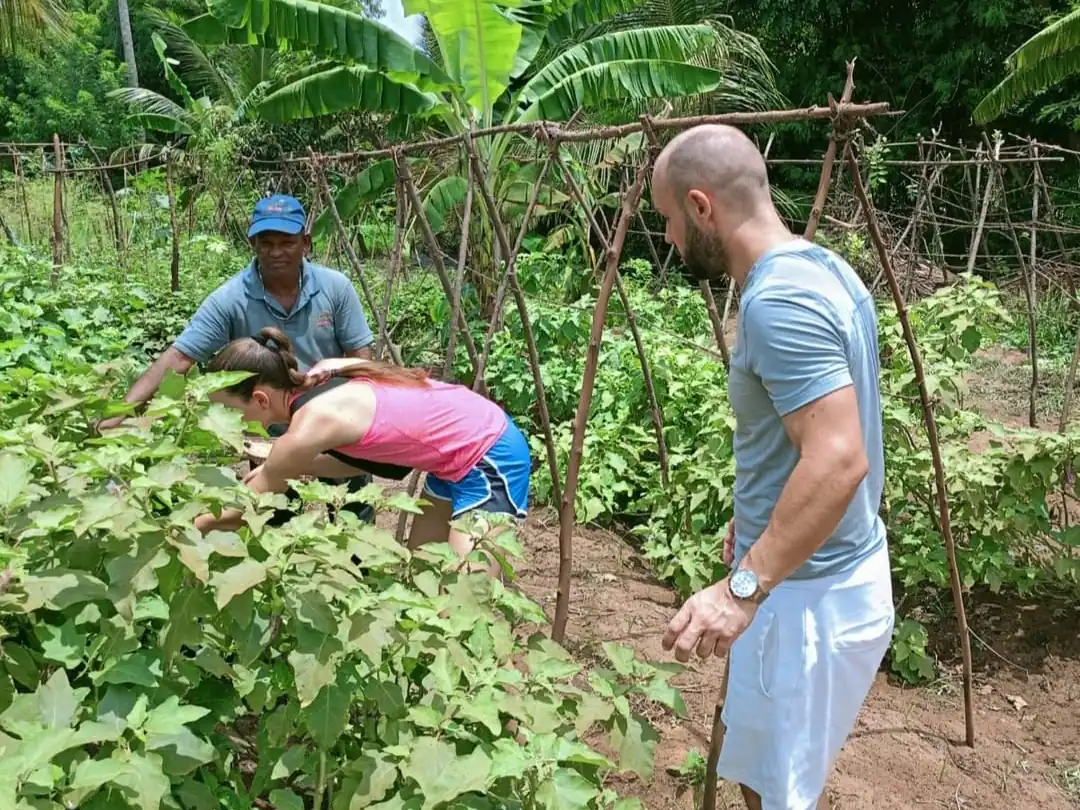When you think about traveling, what comes to mind? Is it exploring a breathtaking natural landscape or immersing yourself in a unique culture? Ecotourism combines both experiences while aiming to protect the environment and communities you visit.
What is Ecotourism?

Ecotourism is tourism that’s focused on nature and minimizing damage to the environment. Ecotourism aims to contribute to conservation, both by teaching tourists about nature and by financially supporting conservation efforts. Sometimes, it even helps local communities by making conservation efforts financially feasible.
How Ecotourism Gained Importance in Conservation
Ecotourism has existed since the 1980s, when environmentalists began promoting it as a tool for conservation. Back then, it was considered a game-changer, a way to protect ecosystems while still allowing people to explore and appreciate them. Many organizations involved in ecotourism have found ways to contribute directly or indirectly to conservation, whether through funding, education, or eco-friendly practices.
Is Ecotourism Just Another Name for Regular Tourism?
One of the main criticisms ecotourism faces is that, often, it doesn’t live up to its name. It may share many practices with traditional tourism, including the infrastructure used, like hotels and transportation systems. In many cases, ecotourism even relies on air travel, which significantly contributes to climate change. So, while ecotourism markets itself as being better for the environment, the environmental cost of getting to these destinations can sometimes cancel out the benefits.
Ecotourism vs. Geotourism
At its core, ecotourism is about engaging with the living aspects of nature—wildlife, plants, and the ecosystems they depend on. This is what sets it apart from geotourism, which is more focused on non-living elements like landscapes, rock formations, and geology.
But ecotourism isn’t just about seeing nature; it’s about understanding and appreciating it. It’s meant to help travelers gain a deeper understanding of natural habitats and the threats they face.
Responsible Ecotourism
Responsible ecotourism programs strive to minimize the negative effects of traditional tourism on the environment. These programs focus on energy efficiency, water conservation, and recycling while creating economic opportunities for the local communities.
What makes responsible ecotourism different is that tourists learn to appreciate the natural and cultural wealth of a place, while local communities benefit from tourism without losing their cultural identity.
Eco Tourism’s Role in Sustainable Tourism

Ecotourism is often viewed as a key component of sustainable tourism, which means it has to go beyond just caring about the environment. It also needs to support local economies and respect social and cultural dynamics. The challenge lies in striking the right balance.
While the ecological benefits are obvious—protecting nature, reducing waste, and promoting conservation—there’s also the need to make sure that the economic, social, and cultural well-being of the local communities is supported. If one of these areas gets neglected, the entire concept of sustainable tourism falls apart.
Risks Associated with Ecotourism
It might seem surprising, but ecotourism, despite its good intentions, can actually harm the environment it’s trying to protect. When too many travelers flock to one area, their very presence can damage the fragile ecosystems they came to admire. Overcrowding, littering, and even the stress caused to wildlife by human activity can all degrade the quality of a natural site. Without strict regulations and responsible management, ecotourism can end up doing more harm than good.
While ecotourism can provide economic benefits, it can also lead to problems for local communities. The influx of tourists can increase living costs, particularly when it comes to rent and property values. This might marginalize the very people who live in and care for these natural environments. Additionally, tension between tourists and locals isn’t uncommon, and if not managed well, it can lead to social friction.
Ecotourism also brings health risks to both travelers and locals. Visitors can introduce diseases or pathogens to isolated, ecologically sensitive areas, endangering wildlife and the people who live there. On the flip side, tourists themselves may be at risk of health problems or accidents due to the rugged, unfamiliar terrain or local diseases they may not be prepared for.
Benefits of Ecotourism
One of the main perks is that it provides a financial incentive to protect and rehabilitate natural environments. National parks and wildlife reserves often rely on the money brought in by ecotourists to fund conservation projects. In some cases, tourists even get involved in these efforts, whether through habitat restoration or serving as environmental watchdogs.
Locals, too, may pick up valuable skills from interacting with ecotourists and learning better environmental practices that benefit their communities long-term.
Beyond the immediate, hands-on benefits, ecotourism can lead to broader environmental awareness. Tourists who experience nature firsthand often leave with a heightened sense of responsibility toward the environment.
This shift in mindset can lead to long-term behavioral changes, not just for the travelers themselves but for the communities they visit, as well. Areas that are protected for ecotourism bring environmental benefits that extend well beyond the immediate tourist interactions.
One of the most obvious advantages of ecotourism is its economic impact. It generates revenue through visitor expenditures, which in turn creates jobs directly related to the sector. For many peripheral or rural regions, this can be a vital source of income. By offering tours, accommodation, or even guiding services, locals can capitalize on their natural surroundings, gaining economic independence.
Ecotourism also has a high multiplier effect, meaning the money spent by tourists doesn’t just benefit tour operators. It trickles down through the community, supporting other industries like transportation, food, and local crafts. Additionally, because ecotourism is closely tied to cultural and heritage tourism, it also supports these sectors, helping communities preserve their traditions while benefiting from the influx of visitors.
Ecotourism has the potential to strengthen communities in ways that go beyond financial gain. By involving local people in tourism efforts it fosters stability and offers a sense of ownership over the land and resources.
Regulation and Mitigation of Negative Impacts
Even with all its benefits, ecotourism can have unintended negative effects. This is why strict regulations and codes of conduct are essential. By ensuring that tourists behave responsibly, ecotourism programs can protect natural environments and local communities from harm.
Effective visitor guidelines, proper waste management, and strict limitations on human activity in sensitive areas are all key to making sure that ecotourism lives up to its promise.
Ecotourism & The Negombo Coastline
Negombo, located on the west coast of Sri Lanka, is a hot spot for tourists—both local and foreign. Its beautiful sandy beaches and fish resources make it an attractive destination, but it’s also a highly populated area, meaning there’s a constant need to balance tourism with local well-being.
In August 2015, a field survey was conducted to gather information on the different stakeholders involved in managing and utilizing the Negombo coastline. Through face-to-face interviews with members of the local community and managers of tourist facilities, the study looked at how the area is governed, what its strengths and weaknesses are, and what opportunities and threats exist for the future.
Strengths & Weaknesses of the Negombo Coastline
The survey highlighted several strengths, including the presence of a sandy beach and rich fish resources. These natural features support a significant portion of the local economy, with 75% of the population involved in tourism and 98% relying on it for income. Regular beach cleaning programs have kept the coastline clean, and the community actively participates in these efforts.
However, the survey also pointed out some weaknesses, such as the lack of government involvement in beach maintenance. Lack of coordination between the various authorities, such as the Coast Conservation Department, the municipal council, and the police, has led to inefficiencies in governance.
Expanding tourism-related activities while improving the cleanliness of the beach are clear opportunities. Enhancing these efforts could make Negombo an even more attractive destination for eco-conscious travelers.
Threats to the Negombo Coastline
The coastline faces several threats, including improper waste disposal and high taxes that affect tourism-related income. Other challenges, like child abuse, drug trafficking, and coastal erosion, also pose significant risks to the area.
Managing Negombo’s coastline requires the cooperation of several authorities. The local government is in charge of maintaining the beach, while the Coast Conservation Department handles coastal erosion and illegal constructions. The municipal council monitors sewage discharges and ensures the coastline remains clean, and the police are responsible for maintaining law and order.
Even with the survey done nine years ago, most of the fans still remain valid to this day. Governing parties must do these kinds of surveys at least once every few years. In that way, they could gather stats and take action to improve Sri Lanka’s tourism.
Right now, Sri Lanka is seeing a surge in tourism with eco-friendly initiatives, and that’s a good thing. Plus, according to a news report, they have ambitious plans to boost forest coverage to 32% by 2030, but here’s the thing: the minister who was there when they started this, is no longer in parliament. Let’s hope the new governing party adapts this kind of initiative to make our tourism industry better.
